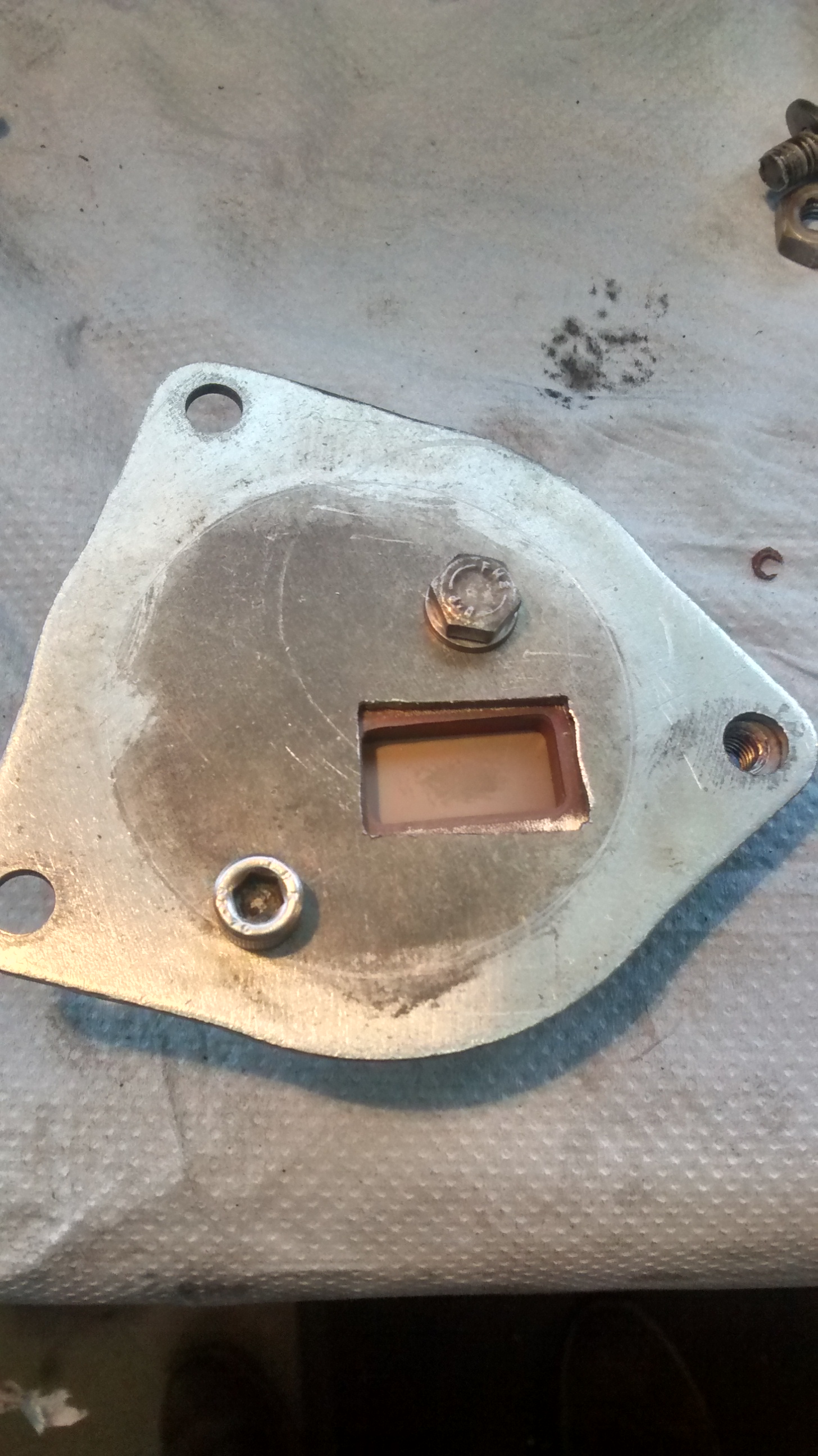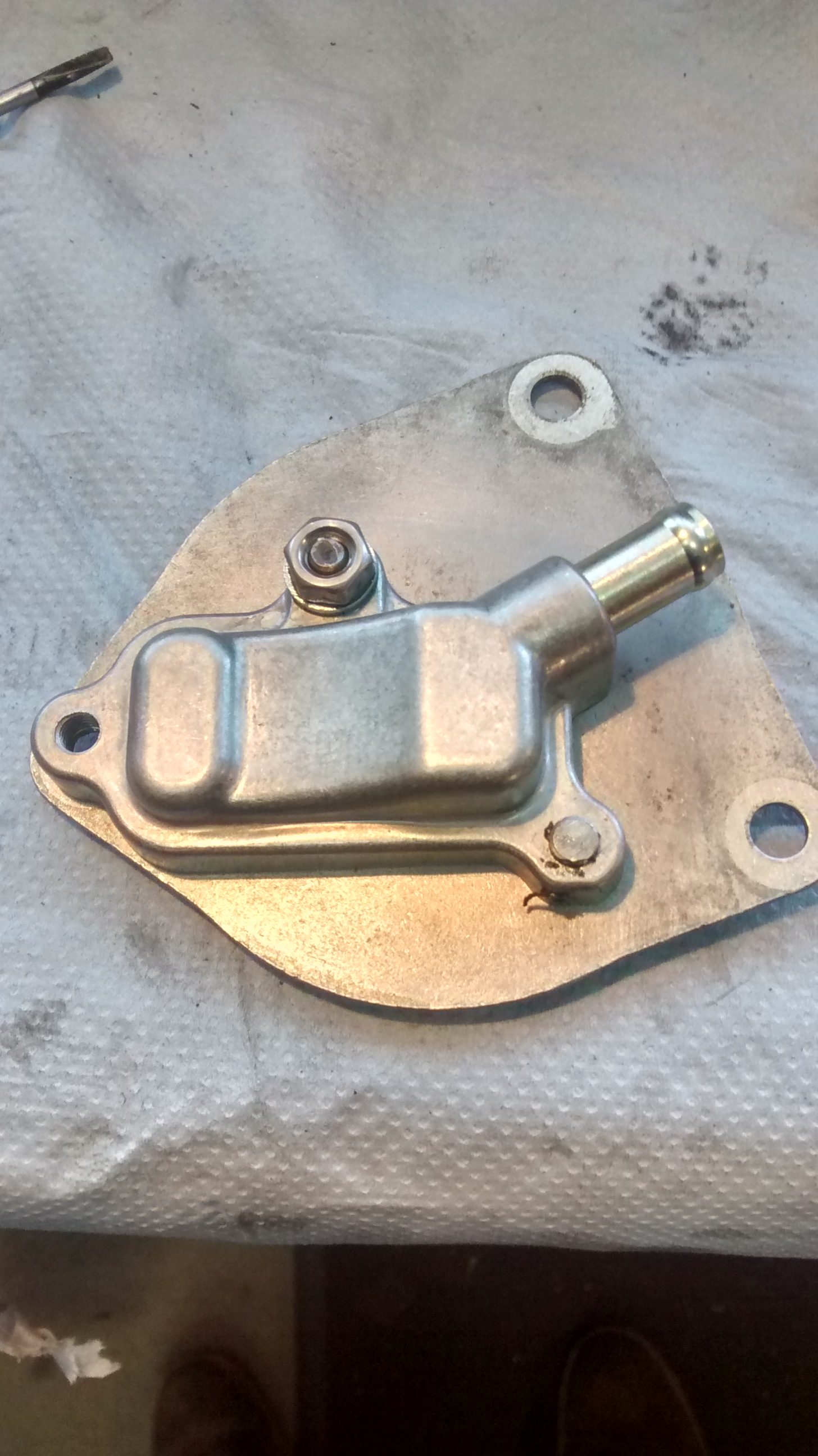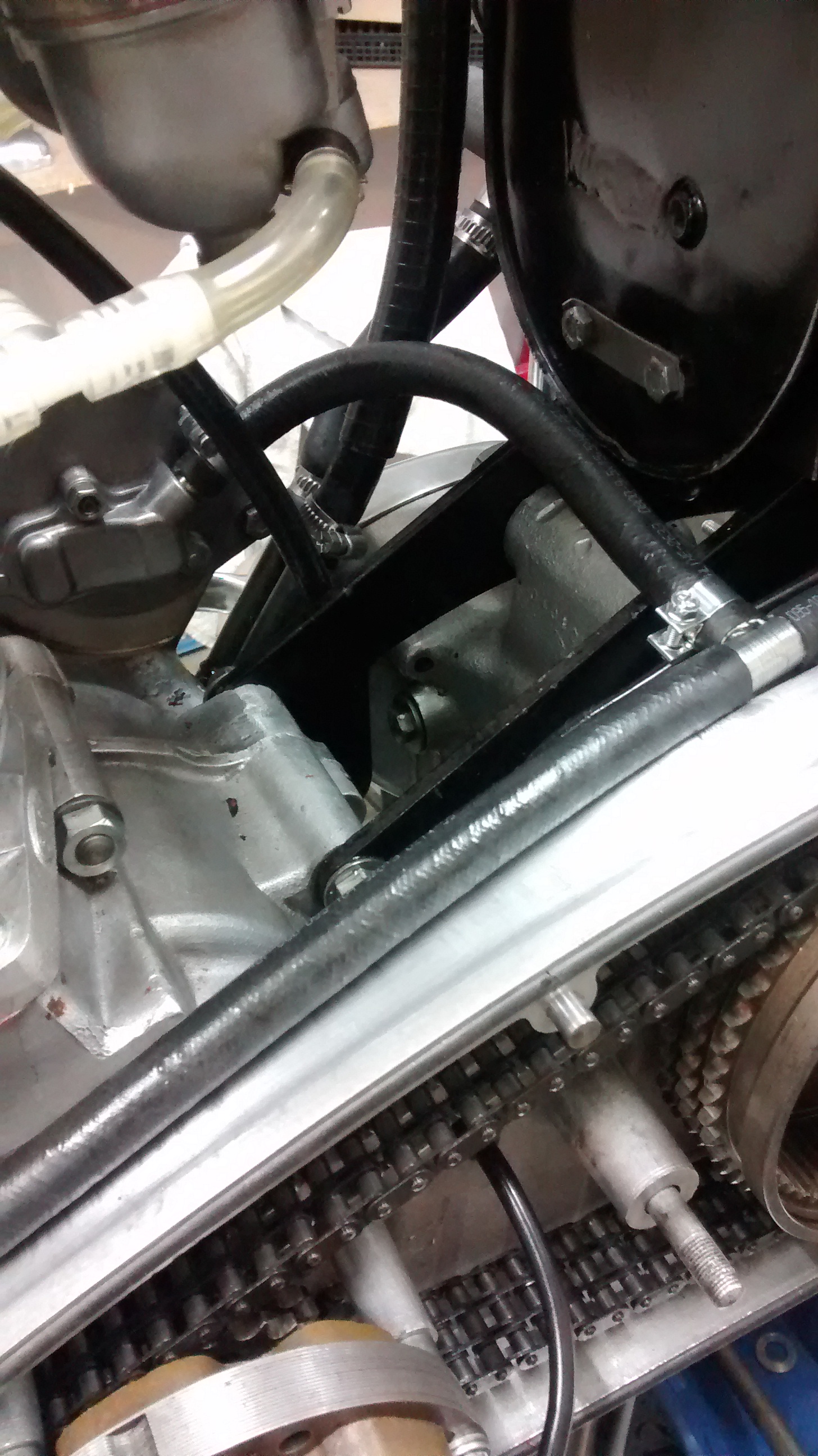I hate to bring this up again but here goes anyway.
I have probably read most of the posts on this subject over the years to prepare to make modifications to the timing side crankcase to improve breathing for an additional crankcase breather I added to the old magneto cover in the timing chest many years ago. I was armed with a tech sheet from Andover Norton for the same modifications for the Combat engine and assumed I could do them to my 1970 Roadster, but the cases and drillings are not the same. There is already a healthy sized air hole between the timing chest and the crankshaft section up near the camshaft and now I'm thinking I don't need to do anything. I'm not sure about the 3mm hole below the oil pump to lower the timing chest oil level that so many people think should be done either. Can anyone shed some light on this please?
I have two breathers, both with PCVs but I don't have the standard camshaft timed disk breather installed anymore.
Just remember…
- Log in to post comments
Holy - Holes
The Norton engine was originally designed to have oil and oil vapour entering the timing cover to help lubricate the gears, pinions and chains.
Of interest here being the very first Model 7 engines only had a single hole plus the crankshaft disc in the timing side crankcase to allow this to happen. The single hole having a one way valve fitted. This valve was dropped in the first year and other holes added to direct vapour at specific chains etc and help drain excessive oil back to the sump.
The later Commando engines only had a single chain to drive the camshaft sprocket but even this needs a supply of vapour to keep it working correctly. Plus don't forget the Oil Pressure Release Valve kicks off very early with a cold engine start-up. This in turn needs a means of getting back to the sump for recycling.
- Log in to post comments
Sump Breather
If you wanted to go the sump breather route, this works well on my 69 Commando.
Sump reed valve breather - JS Motorsport
Quick edit...
The tube (snorkel) in the centre of the sump breather allows for some residual oil to remain in the crankcase for the oil pump (return pickup?)
I use an anti wet sump valve (RGM) on the inlet side rubber pipe between the oil tank and the feed to the oil pump.
The down side for the early oil tanks (Greg Marsh from the US pointed out) is that on some versions the breather inlet pipe into the oil tank from the sump sits opposite the breather outlet pipe from the oil tank to the back of the air cleaner. Not a problem with the weak factory breather
But if you do start the bike with oil above the sump reed valve breather tube you will get a jet of oil across and down into the air cleaner.
He recommends adding a new separate breather inlet pipe into the oil tank.
So far my anti wet sump valve keeps oil below the level of the snorkel. I'll soon know when it doesn't!
Hope that makes sense.
Regards
Eddie
- Log in to post comments
All clear now
Thanks everyone for your input.
Now I have my engine apart it seems that my timing side case is actually different to any of those I have read about regarding crankcase breathing and oil return. The well publicised photo Jim Comstock uses of the early Commando case is earlier than mine and the slightly later photos in access norton and other posts is different yet again. Then of course the Combat and the post 200000 (1972) cases are also completely different. Mine has two oil drains cast into the rear of the timing chest. The original Atlas/Commando one and an additional lower one intended by Norton to resolve the too high oil level caused by the forward tilt of the Commando engine that Jim discusses. Pictures I have found of later models don't seem to have this extra oilway.
As far as airflow goes mine has the large hole between the crankcase and timing side as well as the cutout for the magneto mounting but most other models I have seen that have this air hole do not have the magneto cutout. So as far as breathability goes and considering the size of the hole near the cam I think its more than enough, especially together with the original drive side breather.
I think I'll just leave it as it is. I like the idea of the sump breather Eddie has regarding breathability but you can't drain the oil easily when it wet sumps (and I seem to remember it is over $200 plus shipping!)
(for anyone that needs to follow this for their own bike here is quite a good thread) accessnorton.com/NortonCommando/pre-combat-timing-case-mod-2015.18948/
Cheers!
- Log in to post comments
Side Effects
I like the idea of the piston movement being used to help clear the sump of oil.
However......on my 650 and 750 Nortons, the large drain plug filtered out a lot of the crankcase rubbish and then sent the cleaner oil up an internal tunnel to the return side of the oil pump.
I know that the sump plug disappeared from some Commando models and so presume that the return oil pick-up point moved to somewhere else inside the cases. My question being, by having two outlets from inside the crankcase does the oil pump still get its fair share of the black gold???
- Log in to post comments
Yes…
The sump plug breathers have a ‘snorkel’ which makes sure that the oil pump isn’t starved of oil.
The Colorado Norton Works/Jim Comstock crankcase breather mounts in the same location as the 72 Commando breather.
Both can evacuate a wetsumped crankcase in a few slow kicks, but importantly leave enough to keep the oil pump fed.
Obviously, the 850 breather location on the ‘magneto ear’ and following the Combat service notes does not give you this benefit.
- Log in to post comments
I’m really interested in the…
I’m really interested in the various views on pros/cons of different breather arrangements, since I’ve got a ‘72 Combat engine which had a breather from the old magneto location and oil seemed to build up in the timing case at high revs, improved by restoring the original combat breather location at the back of the crankcase, together with a breather valve to promote lower case pressure. The case hadn’t got enlarged/extra holes into the timing case (at the moment!). Unfortunately I have not got a clear view of what is being compared above (2 paths for return, potential for starving the oil pump?). If anyone could provide some sketches illustrating the points it would be much appreciated.
- Log in to post comments
Confused
Hi Graham. Some of the comments above are confusing to me too. I think the thread drifted off a bit onto the American made product by JS Sports that Eddie Cross has highlighted. The two paths for oil return I was talking about in my "All Clear Now" comments are cast into my cases and drain from the timing chest into the main crankcase and do not effect the oil return pick up for the pump. Combat cases (and it seems most other cases) don't have these two oil drains, just one, which some people seem to think is too high and makes the oil level in the timing chest too high.
Philip Hannams' comment re -two outlets from the crankcase- might be discussing the JS Sports product. Maybe Philip will clarify. Additionaly, Philip mentioned the oil pressure relief valve opening early, which on other earlier Nortons used to dump oil straight into the timing chest exacerbating the oil level issue, but the oil system was changed and most Commando oil pressure relief valves dump the oil directly into the return line now and not into the timing chest.
I've read up a lot on this subject but have only just realised how different many of the crankcase designs are out there. I also note how many blogs seem to mix up the oil level in the timing chest issue with all the different crankcase breathing issues and setups. If I had a Combat with standard Combat crankcases and wanted the breather in the ex magneto ear of the timing chest, I would follow the advice on the Andover Norton tech sheet called "Combat Mods". It should be noted though that if your breather is pulling oil from the timing chest at high revs, this will be resolved once there is sufficient air flow from the main crankcase into the timing chest. Drilling a lower oil return hole down at the bottom by the oil pump is a different issue which changes the level of the residual oil in the timing chest which some people, mainly the very well respected opinions of the Commando expert Jim Comstock, believe to be too high. Whether this mod is necessary is of great debate and is still very much just an opinion.
Happy drilling :)
- Log in to post comments
Crankcase breather
Hello all,
the sump plug breather will not fit on a 1970 Commando because of the main stand cross tube
under the engine which is in the way. I also drilled holes in the timing sinde crankcase and fitted a Yamaha XS 650 breather to the cover on the rear of the timing side crankcase.
I connected the hose from this breather with a t-connector to the hose coming from the timed breather at the left front side of the engine.



- Log in to post comments
Nice solution! Very nice…
Nice solution! Very nice. Does it improve the breathing? And did you drill any extra holes anywhere?
- Log in to post comments




… as your pistons descend, there is 750cc that needs to go somewhere, or get compressed.
If your reed valve is attached to the timing side of the crankcase, you have opened up significantly more volume to play with, so there is less pressure on the seals as the compression is not as great.
This will lessen the pressure on the drive side crankshaft seal, the tacho drive and the three alternator mounting studs, but to be of value it does rely on you removing the bottle neck between piston side and timing side.
I am personally a big fan of going the other way, and sealing up the holes between piston side and timing side and having a reed breather on the piston side instead.
Plus, a much lower oil drain hole to reduce the amount of aeration the oil gets.
The combat service sheet was okay at the time, but was a huge compromise half geared toward a fix that could be performed in a small workshop without having to strip the engine right down.
Plus of course, there was no talk of reed breathers at that time.